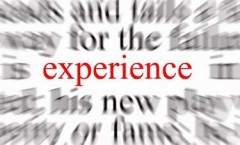 By Chris Norton
By Chris Norton
Experiential marketing has always been charged with the creation of an experience that results in some kind of emotional connection with an idea, campaign, or brand.
Ten years ago, this was mostly in-store promotions and events, but now these activations have to be much bigger in scope, and reach with many more touch points, enabling the consumer to like, share, or comment on their experience with their friends or peers.
This is about encouraging organic conversation around an event and then amplifying the chatter through online and offline channels.
Social media is increasingly playing a fundamental role as a determining factor in an event’s success.
The ubiquity of smartphones has driven this as consumers’ web habits move increasingly towards mobile. Never before have they had more opportunities to talk about and share their real-world experiences, and the nature of a clever experiential activation lends itself to this perfectly.
It’s this interplay between the social web and the real world that really captures my imagination. The very best experiential activations are increasingly social in nature.
Experiential marketing agencies that want to have a lasting affect — and continue to deliver good results — have to look to social in order to stay relevant.
Traditional vs. New Experiential Model
One of the limitations of the traditional experiential model is, once a consumer or audience has connected with your particular event, and hopefully developed some kind of emotional bond to your brand or campaign, the story ends there.
The chatter of social media continues to propel event legacy, taking on a life of its own as it moves through various online networks and communities.
Every person engaged with your event who likes or shares some aspect of it on a social network increases its potential to be talked about, shared, and changed as it travels from one person to another online.
Where a traditional event may achieve, say, 5,000 impressions, amplifying the same event through a social layer could increase that by many, many multiples.
Leveraging a clever event through social media also means consumers have a much more meaningful relationship with that event. We already know consumers landing on a brand website through a social network referral link show stronger purchasing intent, and the same can be said for an event.
By encouraging consumers to engage with the brand post-event through social media ensures an ongoing relationship, making them more likely to organically advocate, talk about, share, and purchase from that brand.
Next Generation Measurement
Another game-changing way in which social media is affecting the experiential marketing industry is when it comes to measurement.
Again, the traditional model to measure ROI for an event is relatively sophisticated, covering a number of industry standard metrics such as redemptions, footfall, engagements, reach, and so on. However, social media listening – where the thousands of conversations around a brand or category can be tracked in real-time – allow for a much more insightful, meaningful analysis.
Specifically, how is sentiment and human behavior changing as a result of your particular event or activation?
This approach also allows you to track what is perhaps the Holy Grail of an event – driving buzz and ‘talkability’ around an event.
Who’s Getting Experiential Marketing Right?
The Core Tour from Ben and Jerry’s launched in 18 countries, taking an ice cream van around and handing out free samples at various stops.
The old experiential model would have stopped there.
Embracing social media, the brand was able to amplify the events and bring in a new dimension of engagement and reach. They did this by using Facebook and Twitter, encouraging consumers to ‘demand’ where the van stopped off (home, office, or school) during the course of its six-week journey, and making that crucial link between eCommerce, social media, and the real world.
Beer brand Carling is also one to push the boundaries.
In 2011, the brand launched a brilliant experiential campaign in South Africa called Be the Coach that was aimed at tapping into the country’s huge passion for football (soccer), frustration with the beautiful game, and high mobile device penetration.
Fans were given the opportunity to ‘be the coach’ of one of two teams, giving them the power to select line-ups, call for substitutions, and ultimately dictate the dynamic and outcome of a live game.
According to Carlsberg, the campaign delivered more than 10 million votes cast via mobile devices, and three fold online community growth. Eighty-five thousand fans attended the sell-out game live.
Finally, we’re seeing brands gaining an understanding of the power and importance of video seeding. Events are now crafted with an end-of-campaign YouTube video in mind.
With an effective seeding and outreach strategy in place, an event now has the potential to have a life of its own, many months after the activation itself.
There are numerous examples of this approach, from Carlsberg mapping projections on the White Cliffs of Dover to The Nivea Stress Test and the Coke Zero open challenge to unlock your inner 007 for a chance to win exclusive tickets for Skyfall.
Experiential Marketing in 2014
As we move toward 2014, we will see even more convergence in the marketing sector. As SEO shifts even further towards PR, experiential will shift towards social media in similar fashion.
Now is the time for experiential marketing agencies to embrace the social web and integrate the work of social media strategists.